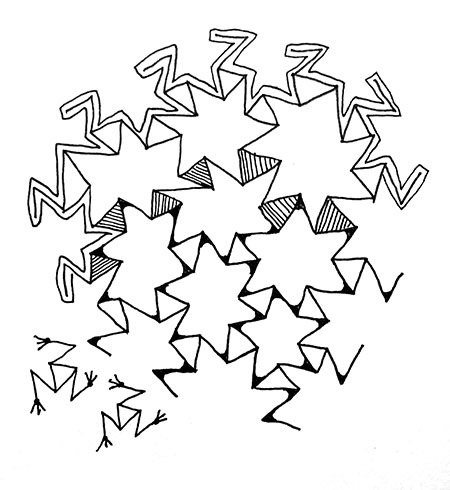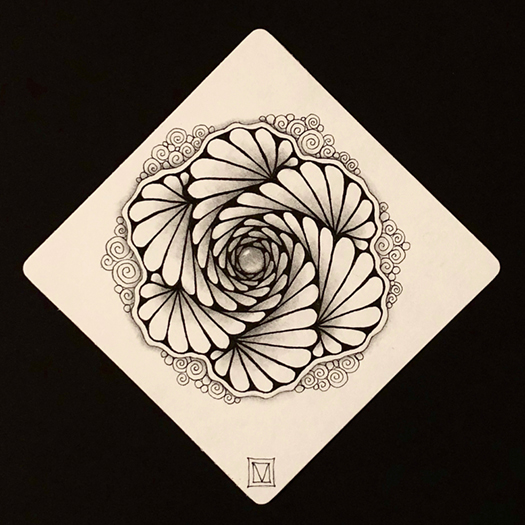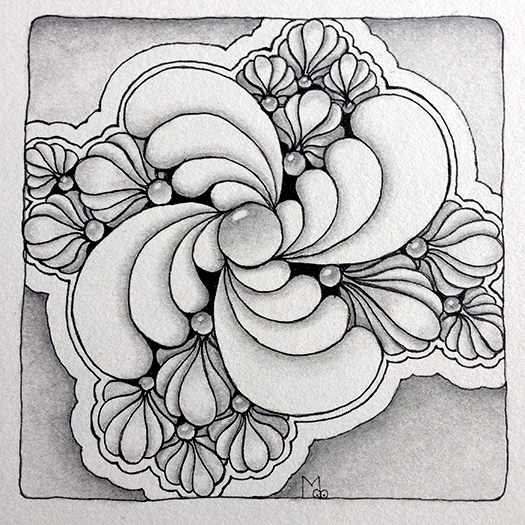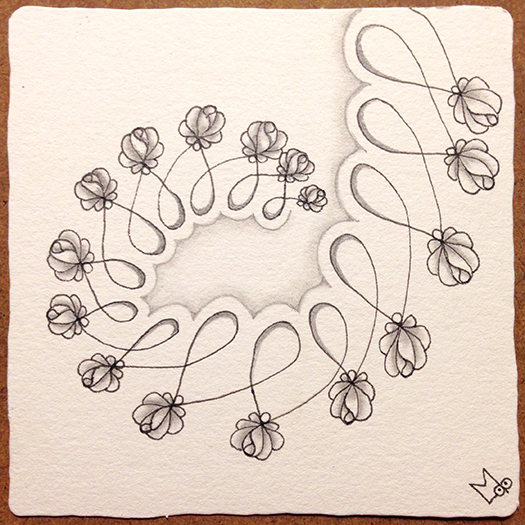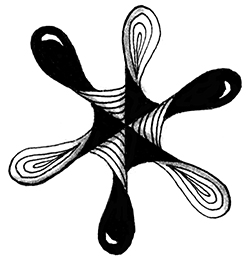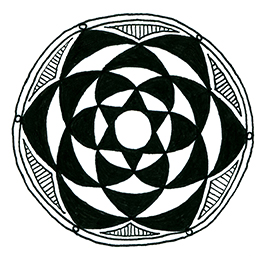
Recently I wanted to draw a freehand labyrinth. I like the quality of a simple freehand labyrinth and had used the “connect the dot” method in the past starting with a cross in the center. I tried to recreate that version but found that I couldn’t remember exactly how I had done it before. As I was trying to figure it out I stumbled on to this variation that turns out to be very similar, but starts out a little differently. To me it resembles a tree, so I have decided to call it the Tree of Life Labyrinth.
Following is the step-out to create this labyrinth on a 3½ inch tile. As you will see, I have used a numbering system to indicate how to draw the lines. It may seem complicated at first but once you understand the process and draw the labyrinth you will see how naturally it flows from one step to the next until the labyrinth is completed.
STEP 1
Place a dot approximately 1/8 inch to the left of the center of the tile.
Note: placement of this dot will determine where and how your finished labyrinth is placed on the tile.

STEP 2
Place a dot horizontally approximately 3/8 inch to the left and right of the first dot.

STEP 3
Using the same 3/8 inch spacing, add five more dots below the first three dots to create a square.

As a reference for the remaining instructions I am assigning a number, 1 through 8, to each of these dots.

STEP 4
Connect dots 2 and 4 with an inward curved line. Do the same for dots 2 and 5, 4 and 7, and 5 and 7. This will form a curved diamond shape in the center of the square of dots.

STEP 5
You will draw the labyrinth from the center out. Start by drawing an upward curved line connecting dots 2 and 3.

STEP 6
Continue with an upward curved line connecting dot 1 to dot 5. This line should aura the first line keeping the distance between the lines roughly equal. Turning the tile as you draw will help you keep the spacing consistent.

STEP 7
Connect dots 4 and 8 in the same manner.

STEP 8
Continue by connecting dot 6 to dot 7.

STEP 9
Finish by starting at dot 7 and adding a final line around the outside of the labyrinth. Stop at the bottom and add a slight downward curve to create the entrance.

STEP 10
The completed labyrinth is now ready for you to travel to the center and back by adding tangles along the path.

This labyrinth suggests a tree to me so I called it the Tree Of Life Labyrinth and filled it in with tangles accordingly. It was a lovely meditation for me.

Here is another drawing I made using this labyrinth. Masking fluid was used for the labyrinth with water color marker added over that. When you remove the masking you end up with a white line.

I feel that drawing a labyrinth freehand adds another level to the meditative experience. I hope you give it a try and don’t worry if it is not centered on the paper, that just makes it more interesting.
As usual I encourage you to try anything you see in this blog post in your own work.
Blessings,
Lynn

